Big Box Reuse
-
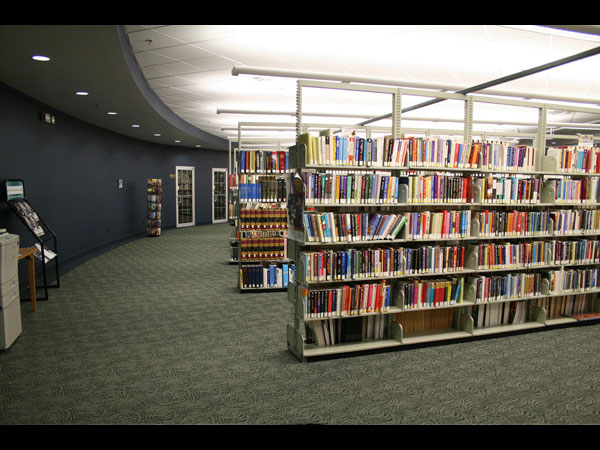 Julia Christensen, CREDIT: Big Box Reuse, MIT Press.
Julia Christensen, CREDIT: Big Box Reuse, MIT Press.The Lebanon-Laclede County Library in Lebanon, Mo., lives in a renovated Kmart building. The library had been trying to expand for years before the plan to use the old Kmart site fell into place. The building is now shared by the library, Maria's cafe, and the Route 66 Museum—which is full of maps, road signs, and other memorabilia from the historic highway. The first challenge in the reuse of a big-box store is the space itself—finding a user that needs 40,000 to 200,000 square feet of space is not easy. In this case, the library knew it needed a moneymaking operation on-site to attract visitors in this rural Missouri county. The cafe and the museum pay rent, lowering the overhead costs of residing in the gigantic building, and they bring in people. The building has become a destination for locals and Route 66 enthusiasts alike.
-
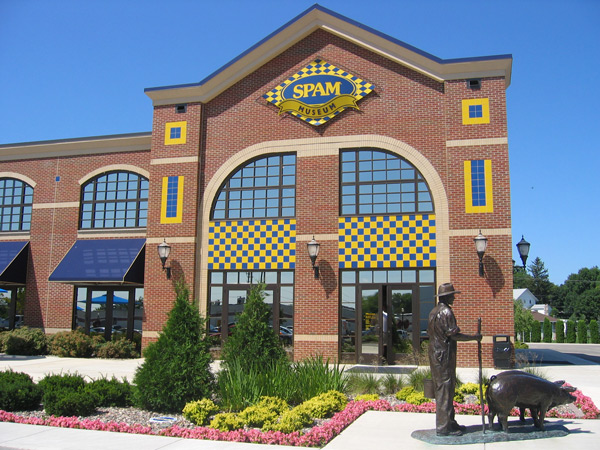 Julia Christensen, CREDIT: Big Box Reuse, MIT Press.
Julia Christensen, CREDIT: Big Box Reuse, MIT Press.At right is the Spam Museum in downtown Austin, Minn., home of Hormel, maker of the famous canned meat product. The museum operates in a renovated Kmart building, which sat empty for several years after the retailer moved to a bigger location on the edge of town. In 2000, the Hormel Corp. bought the store to expand its headquarters less than two miles away. The company held a design competition for dibs on renovating the space, and Paulsen Architects, a firm from Mankato, Minn., won. Half of the building houses the Spam Museum; the other half, additional offices for Hormel.
-
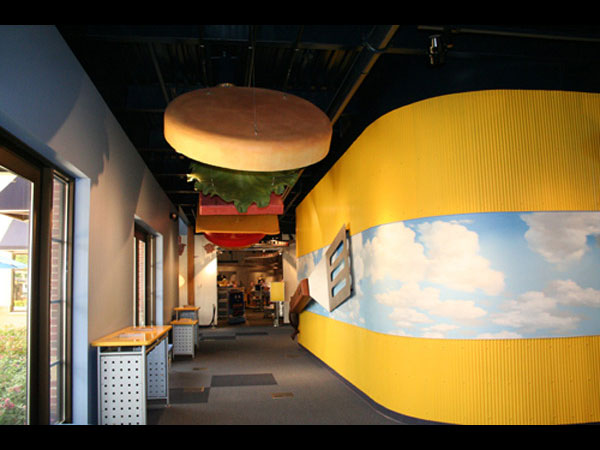 Julia Christensen, CREDIT: Big Box Reuse, MIT Press.
Julia Christensen, CREDIT: Big Box Reuse, MIT Press.The Spam Museum has helped revitalize this small, quiet meatpacking Minnesota community, which now proudly proclaims itself "Spam Town USA." More than 10,000 people travel to Austin every year to visit the museum. Walking paths between the museum site and downtown Austin extend the flow of visitors into the downtown business district.
-
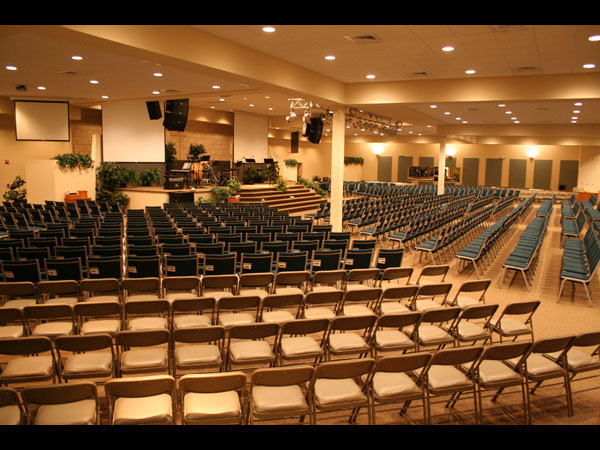 Julia Christensen, CREDIT: Big Box Reuse, MIT Press.
Julia Christensen, CREDIT: Big Box Reuse, MIT Press.The challenges of repurposing big-box stores are not limited to dealing with their unwieldy size. Often, the real estate can be tied up in complicated arrangements. The potential buyer of a big-box store might encounter any number of stipulations on what the building, parking lot, and land can be used for in the future. These stipulations can make it difficult for other businesses to move into an abandoned big-box—but they also open up such spaces for more creative use. The Calvary Chapel in Pinellas Park, Fla., purchased an abandoned Wal-Mart building across the street from its previous home. The deed specified that the structure could not be used by one of Wal-Mart's various competitors for several decades. But for the moment, at least, churches aren't on that list. Many former big-box stores have been reclaimed by civic institutions—a library, a courthouse—and by churches. Before moving into this old Wal-Mart, the Calvary Chapel had made its home in an abandoned Winn-Dixie grocery store across the highway.
-
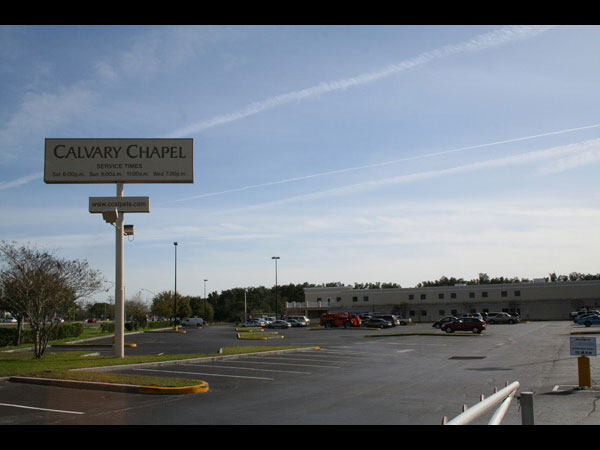 Julia Christensen, CREDIT: Big Box Reuse, MIT Press.
Julia Christensen, CREDIT: Big Box Reuse, MIT Press.Outside most Wal-Marts is a large, multitiered sign that proclaims: "Wal-Mart, We Sell for Less, Always." Renovators often simply paint over this signage, integrating an artifact of the big-box typology into civic life. The former Wal-Mart sign shown here was first painted over with the simple announcement, "Future Home of Calvary Chapel." The final version displays the church's name, service times, and even its Web site. But Wal-Mart's multitiered sign—and an association with the building's past life as a big-box store—remains.
-
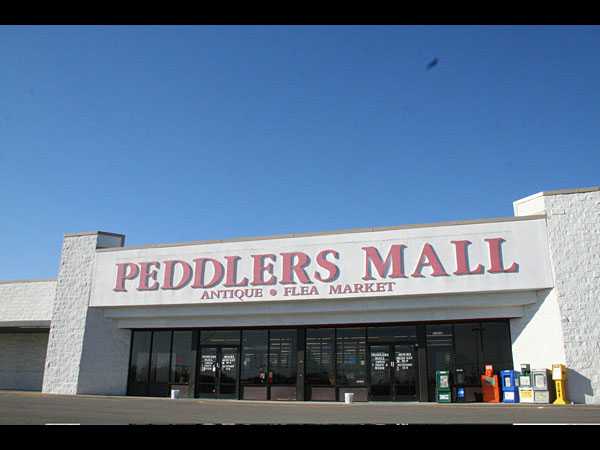 Julia Christensen, CREDIT: Big Box Reuse, MIT Press.
Julia Christensen, CREDIT: Big Box Reuse, MIT Press.The Peddler's Mall is a chain of flea markets started by Kentuckian John George. George noticed a pattern of Wal-Mart stores closing up when Supercenters—larger Wal-Marts that include a grocery store—opened up nearby. George looked into what happens to the leases on these vacant structures. Frequently, he learned, Wal-Mart holds onto the lease and doesn't pursue buyers for the space in order to ward off competition. But George guessed that the retail giant wouldn't see him as competition. He was right.
Currently, there are 18 Peddler's Mall stores in operation, many of them in old Wal-Mart buildings. George says the ideal scenario is when Wal-Mart moves right across the street, because its stores generate so much traffic. Often people will stop in the Peddler's Mall before going to Wal-Mart to see whether any of his vendors have what they are looking for—at an even lower price.
-
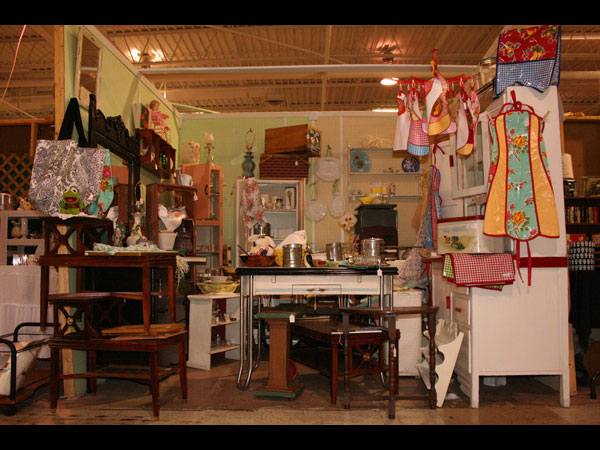 Julia Christensen, CREDIT: Big Box Reuse, MIT Press.
Julia Christensen, CREDIT: Big Box Reuse, MIT Press.The Peddler's Mall is an instance of simple reuse—not much renovation of the existing structure is required. George simply draws a grid on the floor of the Wal-Mart building and rents out space to vendors. Some vendors move in for just a month—maybe they're cleaning out their basements or garages. Others maintain their stalls for years. The Peddler's Mall stores pop up and disappear as the real-estate landscape shifts: They typically move out when the lease changes hands, as other real-estate companies buy the building. But when they're up and running, more than 100 vendors might crowd under the roof of what was once a monolithic Wal-Mart.
-
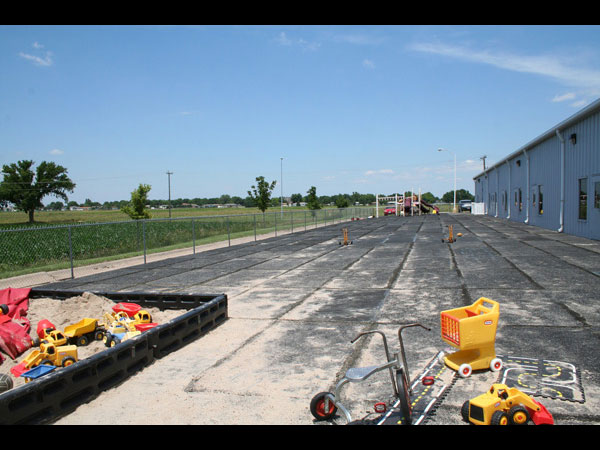 Julia Christensen, CREDIT: Big Box Reuse, MIT Press.
Julia Christensen, CREDIT: Big Box Reuse, MIT Press.The Head Start Early Childhood Center of Hastings, Neb., makes its home in a renovated Kmart. The Head Start lost its original building in a tornado in 1998 and continued operations in ad hoc classrooms and basements around town before purchasing the old Kmart site. Deb Ross, the school's director, drew up the building plans herself. What was once the cargo bay of the Kmart is now a playground for students.
-
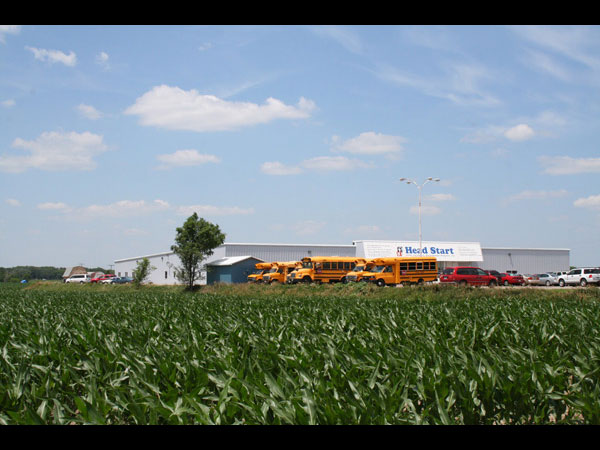 Julia Christensen, CREDIT: Big Box Reuse, MIT Press.
Julia Christensen, CREDIT: Big Box Reuse, MIT Press.Big-box retailers are not known for integrating their surroundings into the designs of their stores. Homogenous buildings are built in city after city, county after county, state after state. Those who repurpose big-box stores tend to be more attentive to the world around them. In the backyard of the Head Start school in Hastings sits an abundance of Nebraska's signature crop: corn. Head Start has been able to integrate the adjacent cornfields into its curriculum. Students draw pictures of the corn as it grows and learn from their farmer neighbors.
-
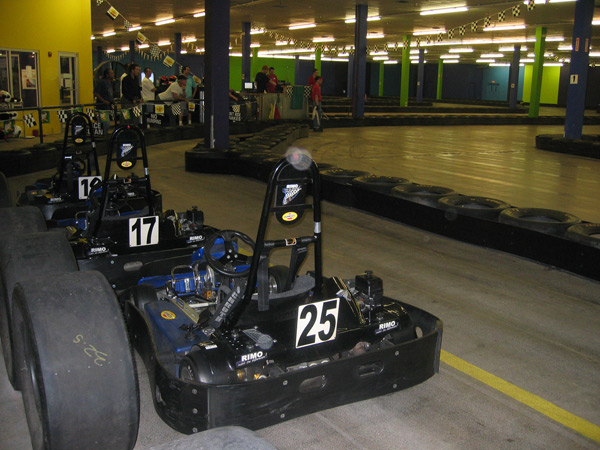 Julia Christensen, CREDIT: Big Box Reuse, MIT Press.
Julia Christensen, CREDIT: Big Box Reuse, MIT Press.The RPM Indoor Raceway, a high-end go-kart track, used to be housed in a renovated Wal-Mart in Round Rock, Texas, just outside of Austin. The raceway became a popular destination, particularly for people from the company across the street: Dell Computers. Though the business flourished, ultimately it could not be sustained. The raceway was a "land bank," a tenant that paid the rent and kept the site active while the owner pursued more lucrative users. It was eventually evicted when the real-estate company that owned the building had an opportunity to fill the space with national corporations that could bring in millions more in rent. It's now been developed into a strip mall that includes a Gold's Gym, a smoothie shop, and a tanning salon.
Although big-box stores may appear to have an ephemeral, disposable quality, these structures rarely just go away. They exert power over our communities long after the companies that built them have turned off the lights. Integrating these unwieldy structures into the commercial or civic life of our cities and towns requires ingenuity, but as the retail landscape of America continues to change, it is also becoming increasingly imperative.